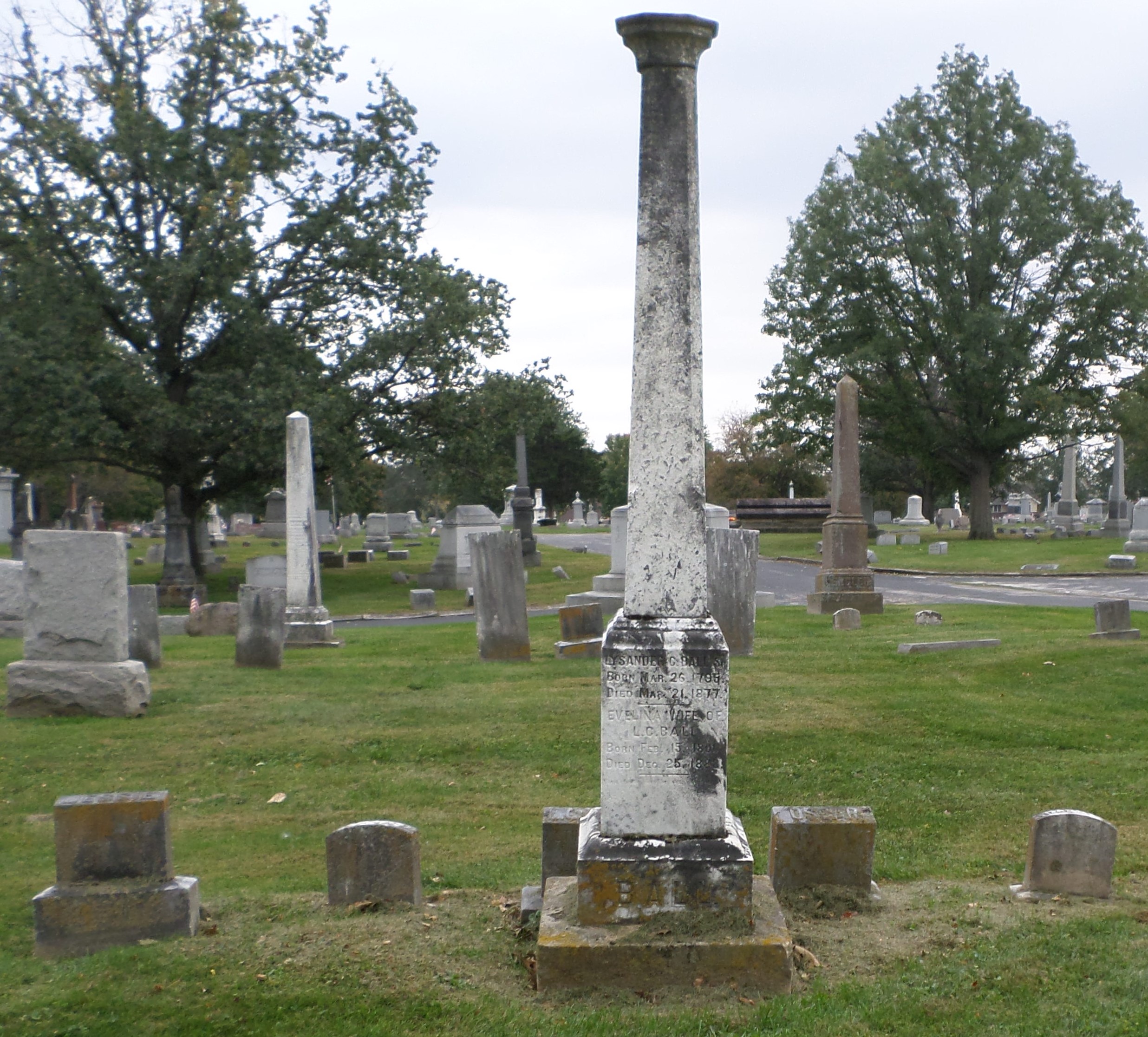The roads westward through the old "Black Swamp," as it was then called, being perfectly impassable at the time, Mr. Ball was persuaded to establish himself in business at Fremont, and like many others with small means took " Hobson's choice." He placed his little blacksmith shop on ground now occupied by State street, between the Croghan House Block and Buckland's corner. Mr. Ball was married, February 23, 1823, to Miss Eveline Patterson, daughter of Reuben and Eunice (Danforth) Patterson, and took up his residence in a log cabin adjoining the back part of what is now "Croghan House" lot. In this cabin two children were born to them, the first dying in infancy. He afterward built and for many years occupied a residence and shop on Front street, north of the Wheeling depot, which property was in later years purchased by the Wheeling & Lake Erie Railroad Company. In 1853 he moved thence to a farm north of the city, but adjoining the corporation, where he continued to reside until his death, which occurred March 21, 1877, when he was at the age of eighty-two years. His residence was on high ground overlooking a bend in the river from which the scenery is delightful. Being a lover of the beauties of natural scenery, he employed his sound, well-balanced mind and his industrious hands in working a magical change in his home surroundings.
In the life and character of Mr. Ball, the virtues of industry, temperance, frugality, truth and integrity, order and peace, were conspicuously displayed. A model husband and father, a good and generous neighbor, carried away by no excitement, misled by no shams or false appearances, loving his home and family so that except on duty he was seldom away from it, he led that peaceful and complete life which entitles him to a lasting and honored remembrance.
The roads westward through the old "Black Swamp," as it was then called, being perfectly impassable at the time, Mr. Ball was persuaded to establish himself in business at Fremont, and like many others with small means took " Hobson's choice." He placed his little blacksmith shop on ground now occupied by State street, between the Croghan House Block and Buckland's corner. Mr. Ball was married, February 23, 1823, to Miss Eveline Patterson, daughter of Reuben and Eunice (Danforth) Patterson, and took up his residence in a log cabin adjoining the back part of what is now "Croghan House" lot. In this cabin two children were born to them, the first dying in infancy. He afterward built and for many years occupied a residence and shop on Front street, north of the Wheeling depot, which property was in later years purchased by the Wheeling & Lake Erie Railroad Company. In 1853 he moved thence to a farm north of the city, but adjoining the corporation, where he continued to reside until his death, which occurred March 21, 1877, when he was at the age of eighty-two years. His residence was on high ground overlooking a bend in the river from which the scenery is delightful. Being a lover of the beauties of natural scenery, he employed his sound, well-balanced mind and his industrious hands in working a magical change in his home surroundings.
In the life and character of Mr. Ball, the virtues of industry, temperance, frugality, truth and integrity, order and peace, were conspicuously displayed. A model husband and father, a good and generous neighbor, carried away by no excitement, misled by no shams or false appearances, loving his home and family so that except on duty he was seldom away from it, he led that peaceful and complete life which entitles him to a lasting and honored remembrance.
Family Members
Advertisement
Advertisement


















